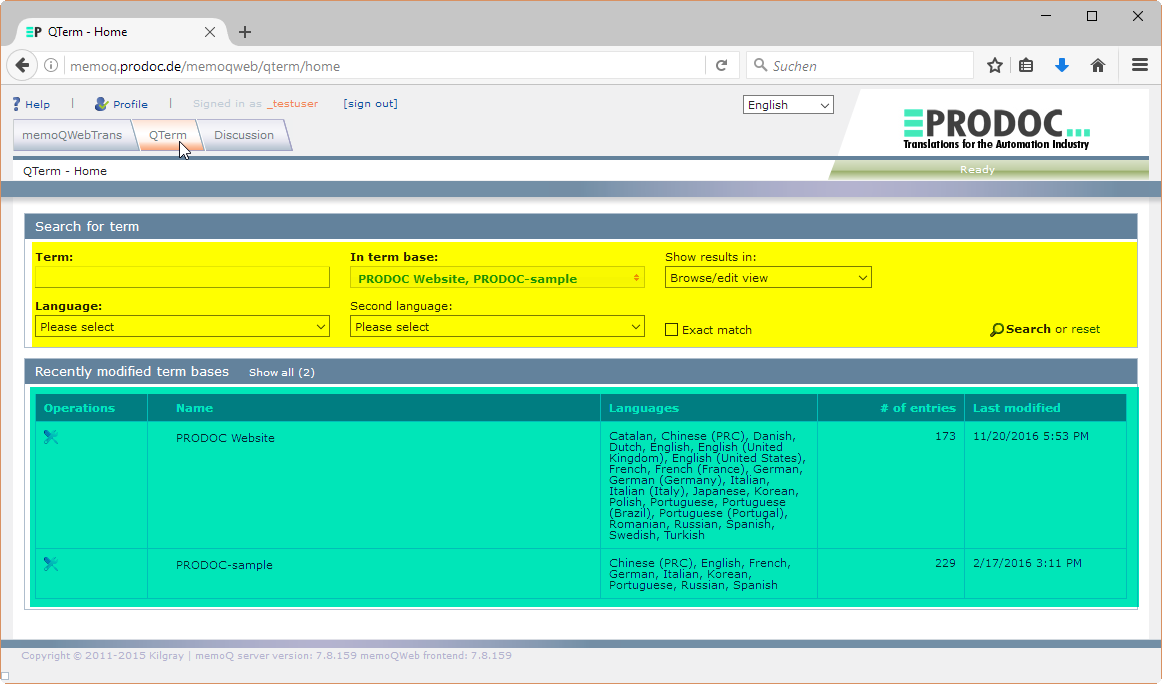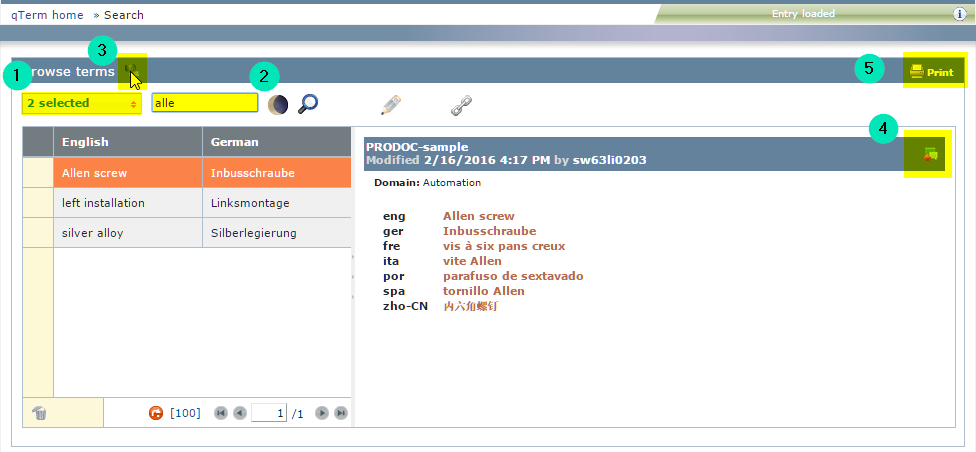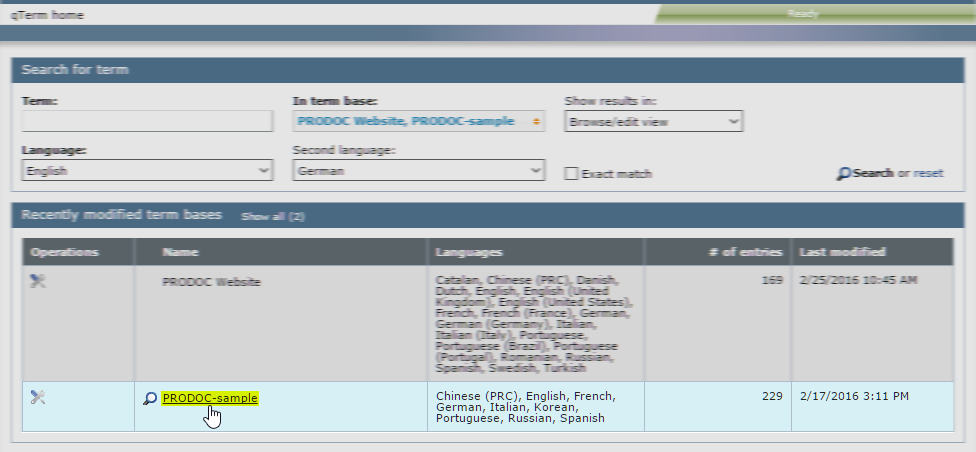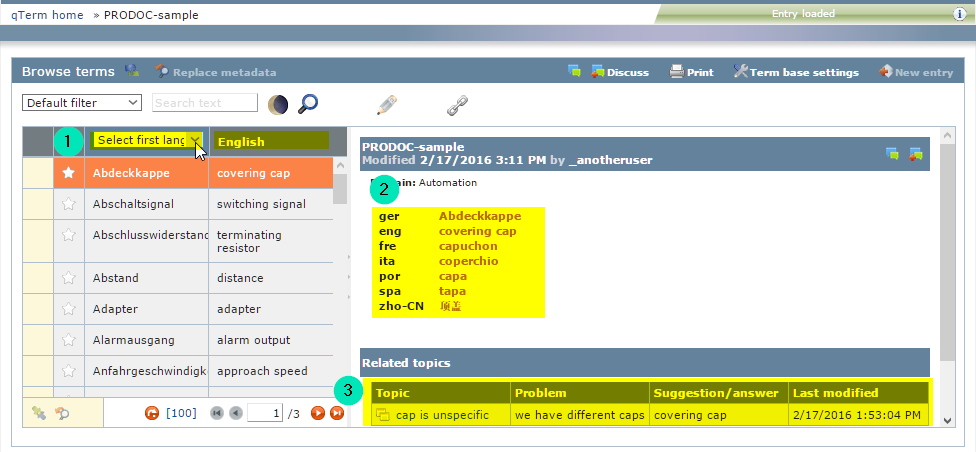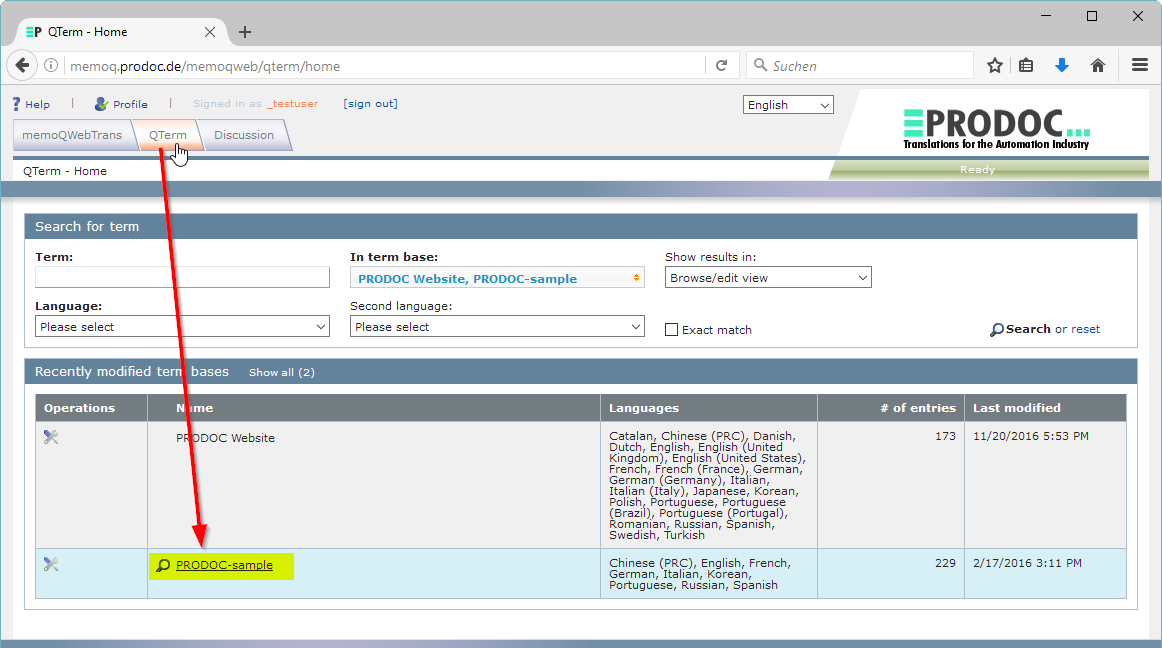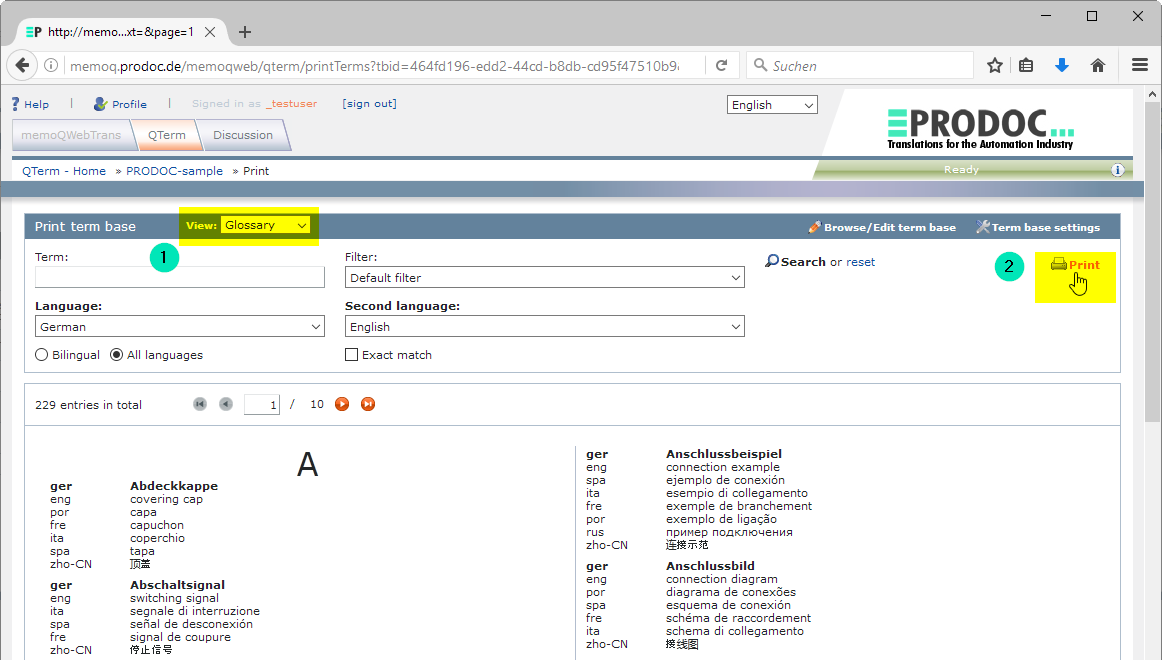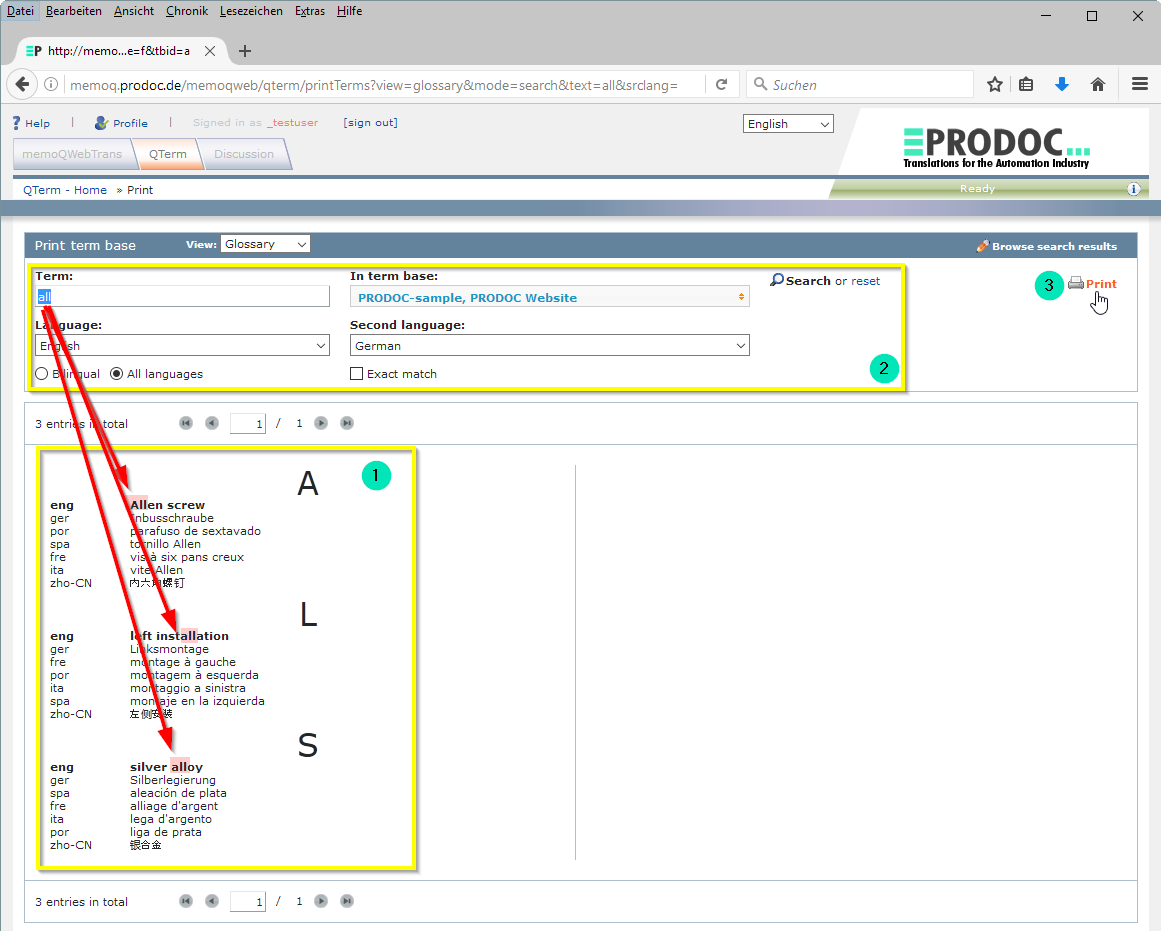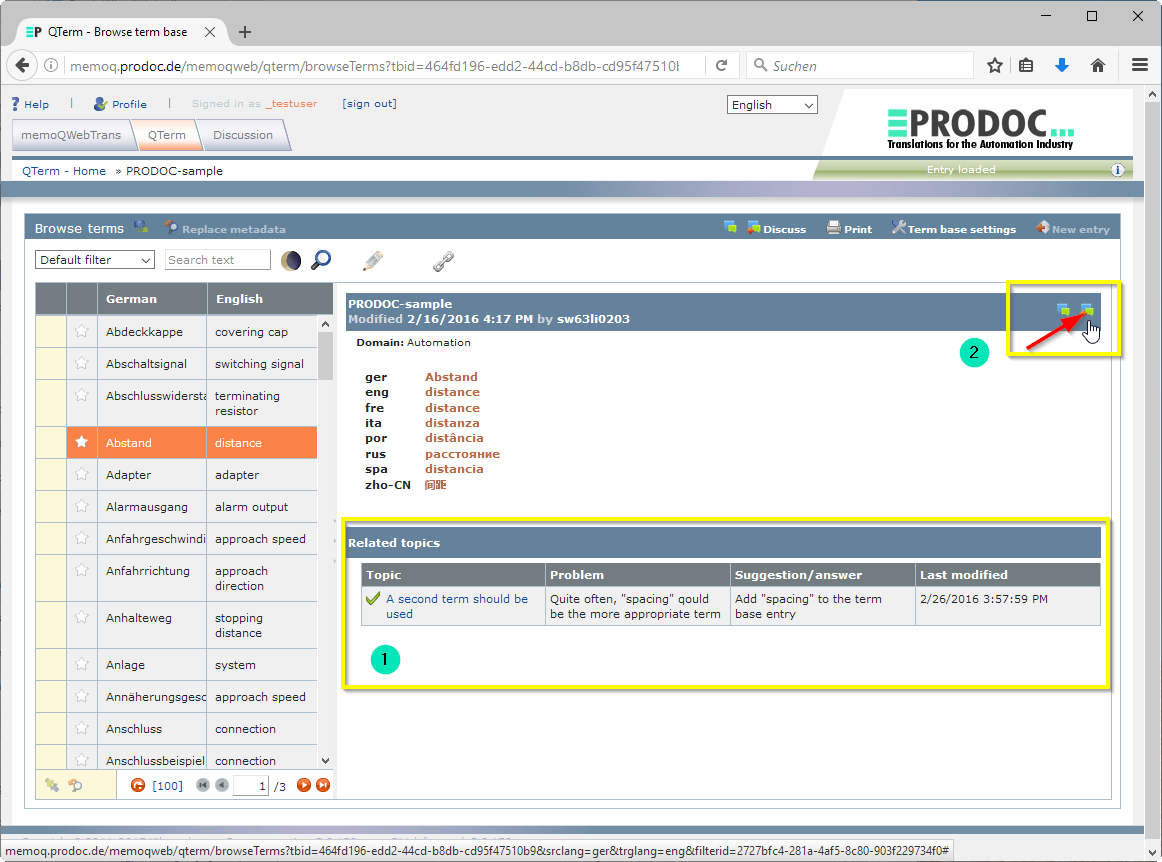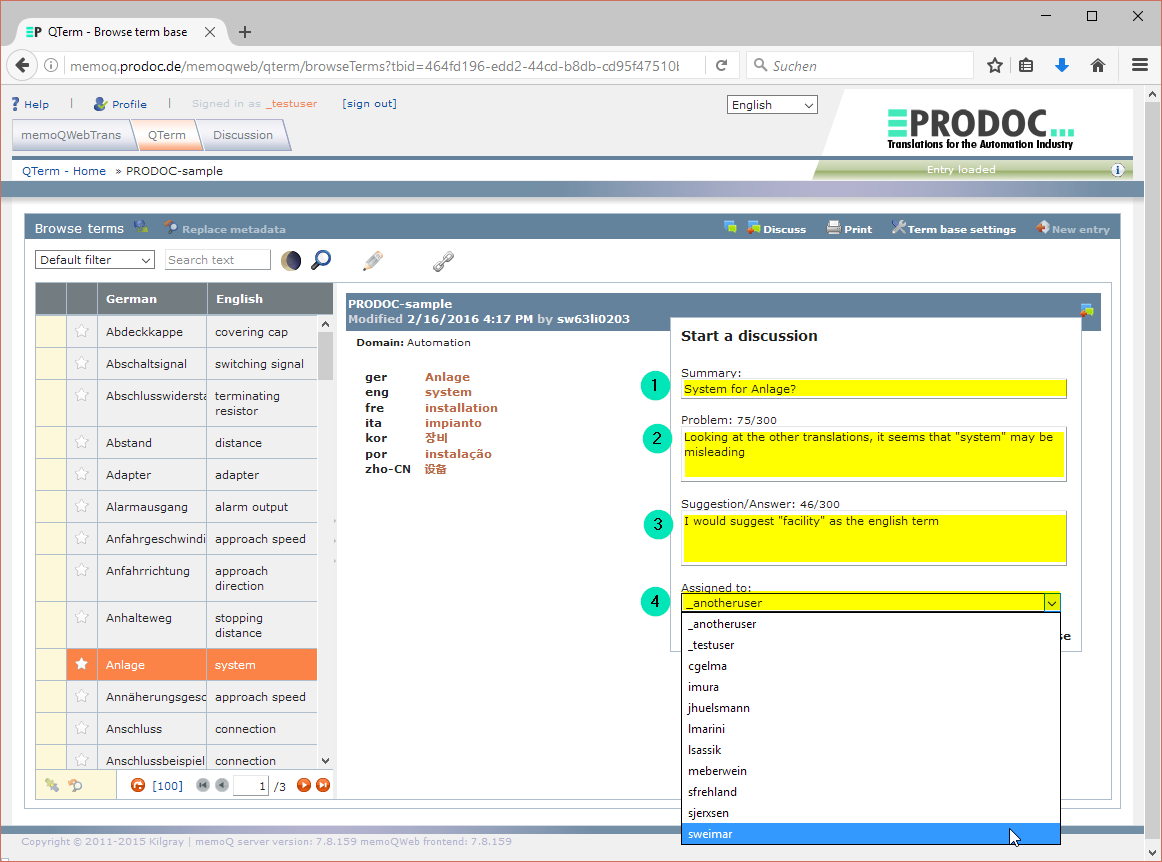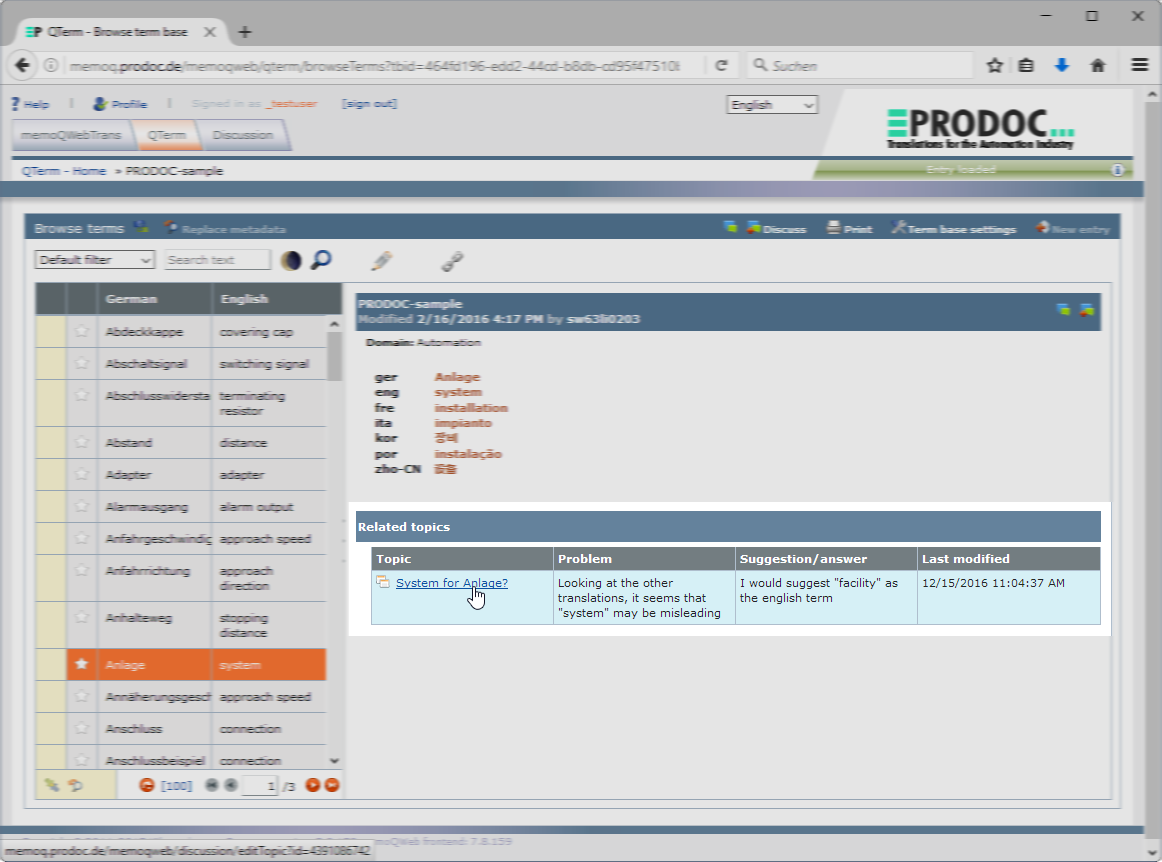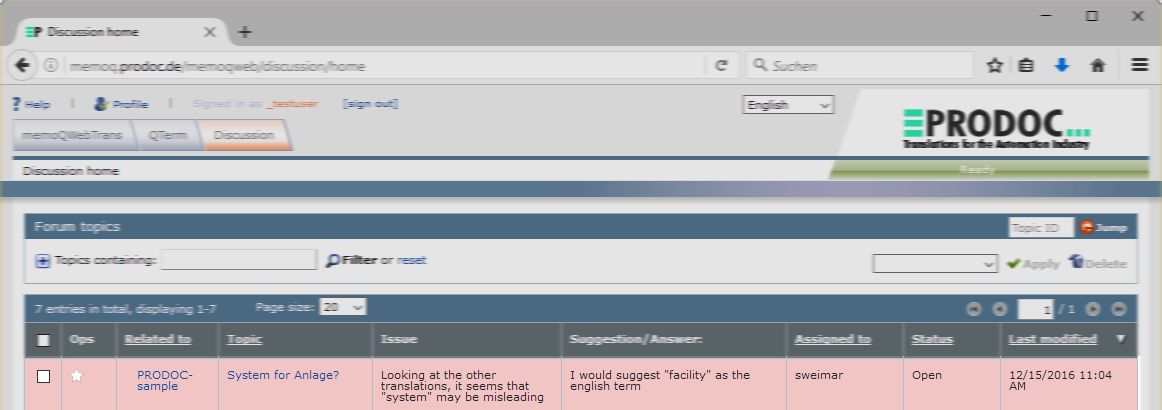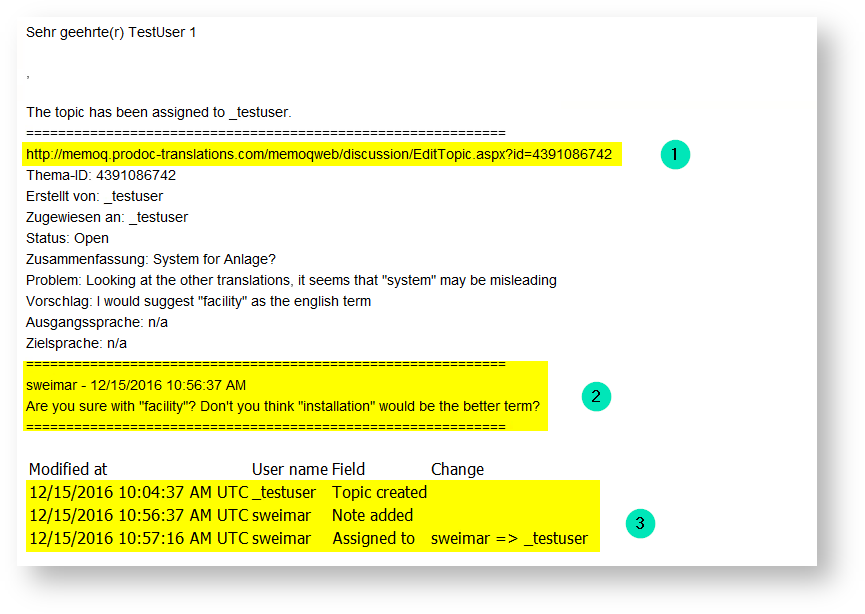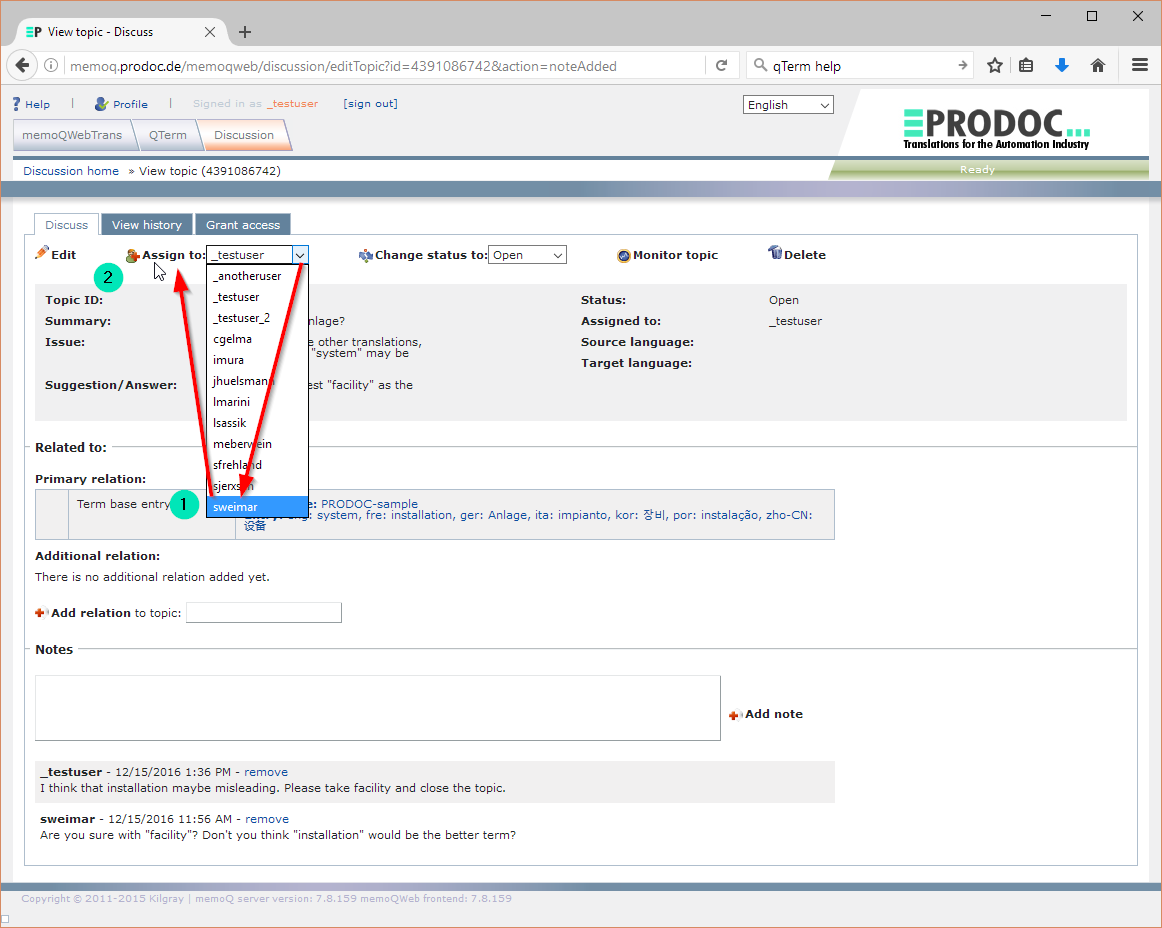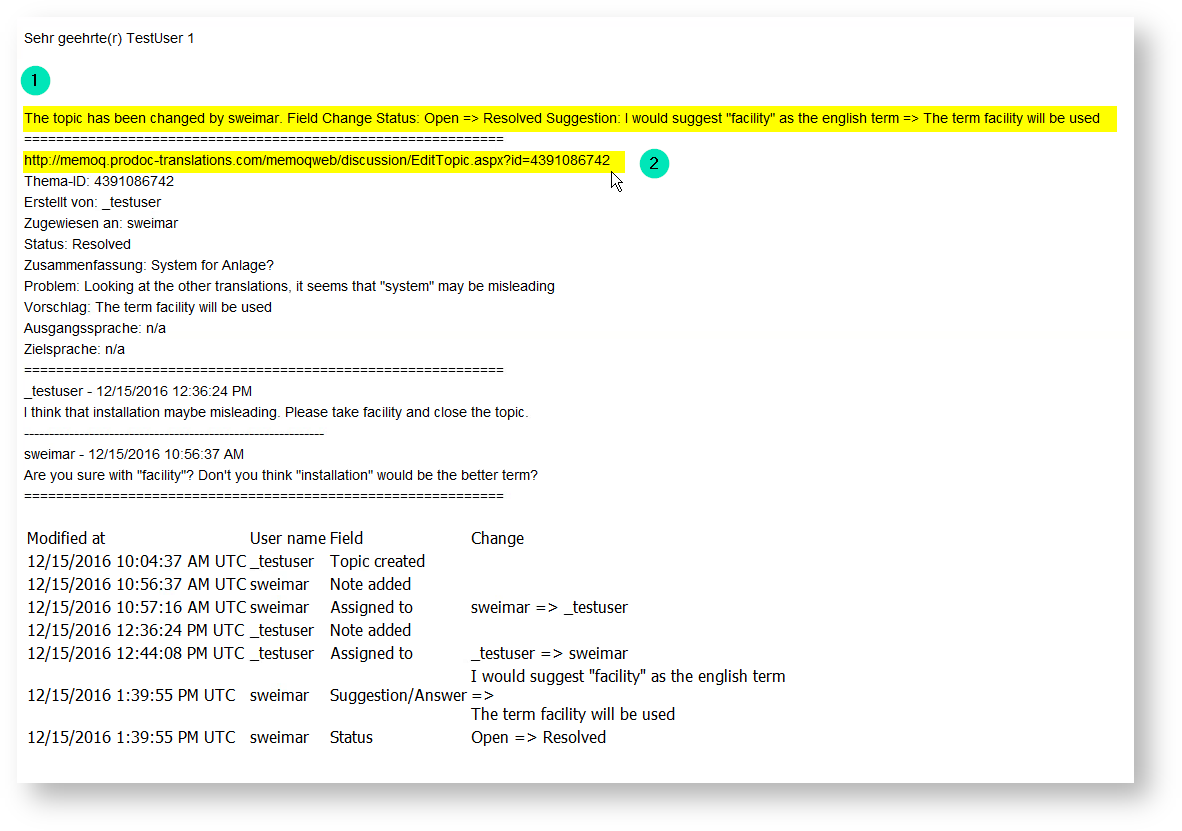Overview of QTerm terminology database
Our Terminology Management page provides general information on terminology management. Here on this page you will find step-by-step instructions for completing various tasks in QTerm.
QTerm is the web-based terminology management system for memoQ.
For every customer PRODOC maintains one or more term bases.
Customers can view the contents of these term bases via a web browser.
In order to keep the terminology consistent, users only get lookup privileges for these term bases. They can:
- Look for terms and their translations
- Print the contents of the term base
- Use discussions for terms they want to have changed
You need a user name and a password for memoQweb in order to access QTerm – see memoQweb
QTerm – suitable for all languages
QTerm is Unicode-based and offers functions for fonts that run from right to left. QTerm can therefore be used for all languages.

QTerm – a cross-industry tool
QTerm is a generic terminology database that can be used in all industries.
At PRODOC we use QTerm for the following industries:










Want a demo?
We will be happy to demonstrate live how you can use QTerm.
Simply call us to make an appointment!

Dipl.-Ing. Stefan Weimar
Managing Director
Operating instructions for QTerm
In the following you will find operating instructions for QTerm terminology database.
With the help of the table of contents on the right you can quickly jump to the topics that interest you
Search for a term or a sequence of characters in QTerm
QTerm Home
Log in to memoQweb at https://memoq.prodoc-translations.com/memoqwebLegacy/.
Then click on the QTerm tab:
The upper part of the window offers search options (highlighted in yellow)
The lower part of the screen shows all term bases currently assigned to you (highlighted in green).
If the term base you are looking for is not shown on the list: please contact your PRODOC contact person
Look-up options
- Enter the term or parts of it in
Term: - If required, check
Exact match - Set the source
LanguageandSecond languagefor your search - By default, all term bases assigned to you are selected for search queries. If you only want to search in certain databases, select them under
In term base:
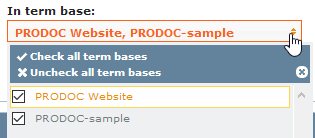
- Under
Show results inyou can choose whether you want to display the results on the screen or print them:
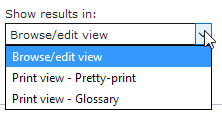
- Click on
Searchto start the query
Displaying search results
In the Browse terms window you can see the results of your query:
Here you can:
- Change the term bases for your search:
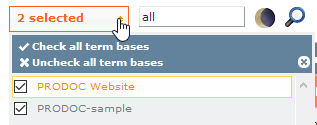
- Modify your search term and
- Update the search list

- Start a discussion regarding the term
- Get a print preview and print the currently displayed list
Browsing specific term bases
In qTerm Home, click on the name of the term base you want to browse:
Now, all entries of the selected term base are displayed
- Select source and target language
- Select a term and view all translations existing for the term
- Term-related discussions are shown here, if existing – these show the history of the term, i.e. questions asked and decisions made in the past regarding this term
Printing term bases
QTerm has two print layouts for printing entire term bases or search results:
- Print an entire term base
- Print a search result list
Print an entire term base
Click on the name of the term base to be printed
In the next window click on Print
- Under
View, choose theGlossaryoption.
Depending on the size of the term base, the screen layout may take some time … - Then click on
Print
Download the PDF file in the next window and then clickClose to close the window
Done!
If you would rather like to have the terms in an editable format, simply contact us!
We can provide term base contents in the following formats:
- TBX
- CSV
- XLSX
- SDL Multiterm
Print a search result list
The list of search results displays only those terms that contain the string you entered in the Term field:
This can be helpful if you want to look for consistent translations of words with the same root.
- Enter the term or parts of it in
Term: - Set the source
LanguageandSecond languagefor your search - By default, all term bases assigned to you are selected for search queries. If you only want to search in certain databases, select them under
In term base:
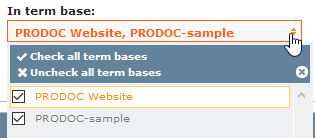
- Select
Print view - Glossary - Click on
Search
The following window appears:
The red arrows here indicate the search string
- Check the search results and layout
- Modify your search, if required
- Print the results
Using discussions for terminology management
The discussion feature is used for terminology based communication. More information on discussions can be found under memoQweb or on the memoQ homepage.
Starting a discussion in QTerm
Select the term you want to change
- Check existing discussions, if there is none answering your questions:
- Start a new discussion. Warning: choose the right button (on the right) as shown in the screenshot
Enter discussion details
After a click on the discussion symbol the Start a discussion dialog box opens:
- Enter a
Summary– this summary will be shown as a clickable link in the discussion overview - Give a brief description of the problem
- Make a suggestion to solve the problem
- Assign the discussion to your PRODOC contact person
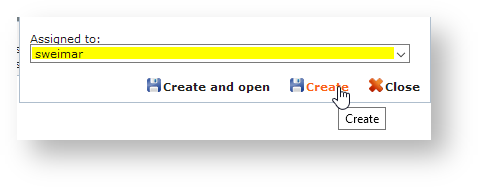
Click on Create
QTerm performs automated actions
After clicking on Create two actions occur in the background
- A Discussion topic is created and assigned to the selected user
- An email is sent to the selected user to inform him that a Discussion topic has been assigned to him, including the Discussion topic details and a direct link to the discussion topic in QTerm (highlighted in yellow)
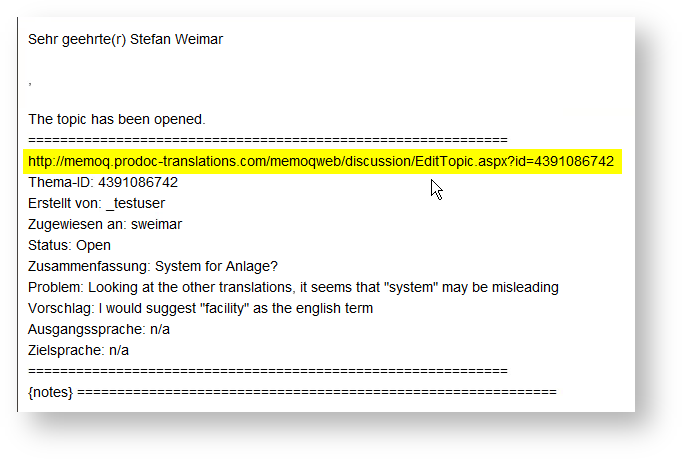
The new Discussion topic is shown immediately in the Related topics section of the term:
And the topic is available to everybody with access rights to the related term base in the Discussions section of memoQweb as an open topic with red background:
Editing discussion topics
The Discussion topic will now be processed by the assigned person.
Topic remains Open
If the topic cannot be clarified and your PRODOC contact has further questions, they will assign the Topic to you again.
You will then receive an email:
The email contains:
- The link to the Discussion topic in QTerm
- The note that was added by the previous user
- The history of the Discussion topic
Edit the Discussion topic as follows:
- Click on the link in the email (1) to directly open the related Discussion topic in your web browser:

- Look at the
Notesat the bottom of the window. There you find the latest notes on the topic. - Add a new note to the topic

- Suggest a solution in the
Notesfield and click on Add noteAdd note
The new note is saved with the topic. Now you have to send the Topic back to PRODOC:
- Select the PRODOC contact person and
- Click on
Assign to:
The PRODOC contact person will receive an automated email and can either continue the discussion or set it to resolved.
PRODOC sets the Topic to Resolved
The status Resolved means that PRODOC has made a decision and the topic is resolved.
You, as the person who has started the discussion, will receive an email when the Topic is resolved:
The email contains:
- A summary of the resolution
- A direct link to the Topic
Your actions
Click on the link to view the Topic in your web browser
- If you don’t agree with the decision, set the status back to
Openand click onChange status to
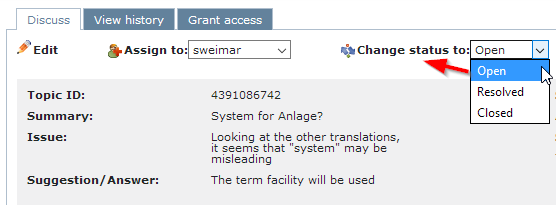
- Enter a new note – see above
If you agree, do nothing, just close the browser window
